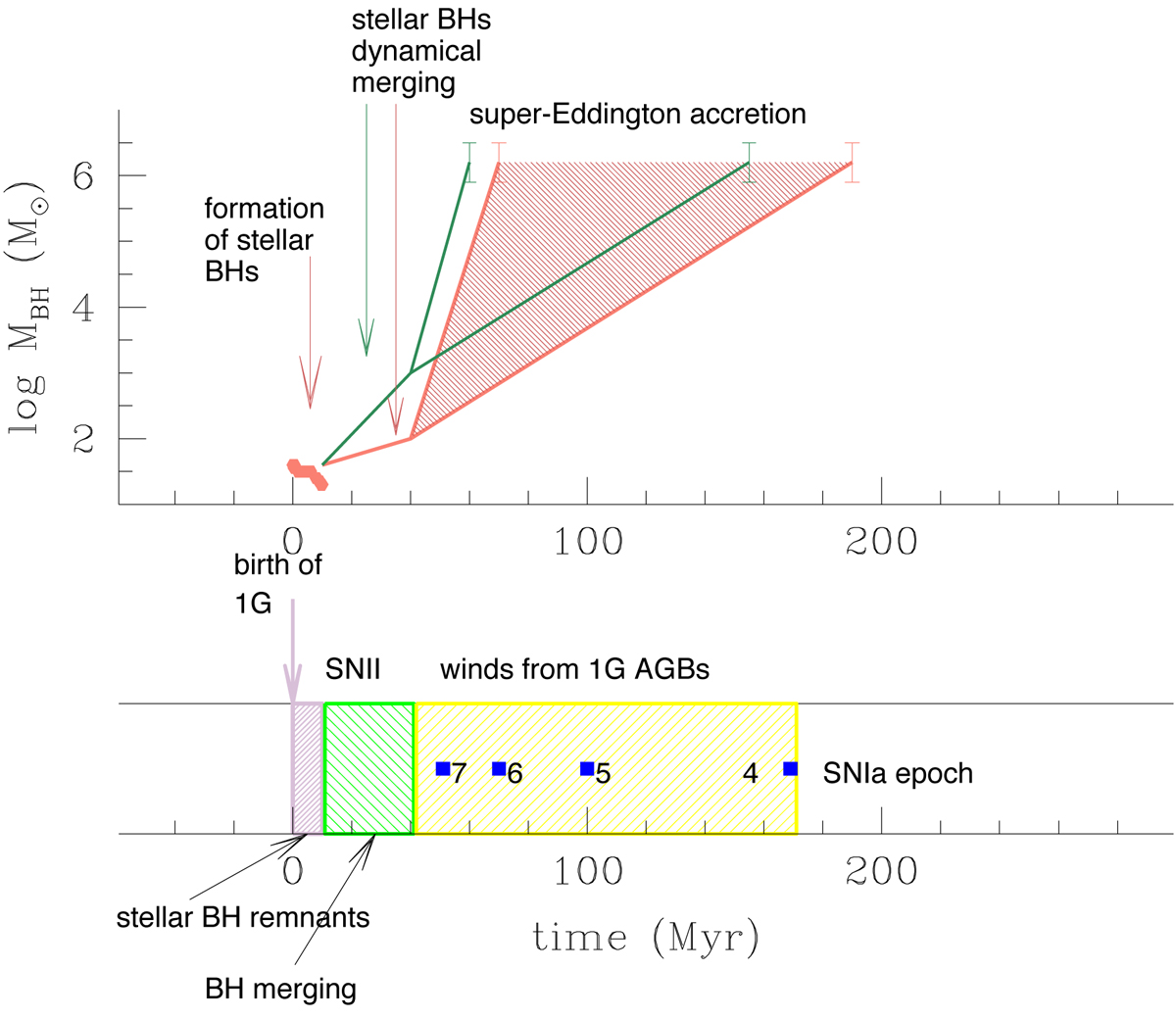Fig. 2.

Download original image
Sketch of the players in the game. At the bottom, we show the “ruler” of timescales in a standard Globular Cluster in the AGB model and at the top we show the possible growth of the central BH. The time origin is set at birth of the first generation (1G). Grey box: Formation of BHs of 40–20 M⊙ from the evolution of the most massive stars down to ∼25 M⊙ (∼10 Myr); green box: SN II epoch, scarce presence of gas; stellar BHs merge and leave a seed BH of 100–1000 M⊙ (red and green lines in the upper panel; ∼30 Myr). Yellow box: “Quiet” period of AGB evolution, the evolving masses are marked as blue squares. AGB ejecta and the re-accreting interstellar gas mix and produce the cooling flow giving origin to the formation of the second generation. Part the gas collecting into the central regions also feeds the BH (≲130 Myr). Afterwards, SN Ia begin exploding in the cluster. In the upper panel of the figure we show schematically how Super-Eddington accretion allows the BH to reach the mass of log(M/M⊙)=6.2 ± 0.3, starting from a BH of 100 M⊙ (red triangle) or 1000 M⊙ (green lines). Accretion occurs at the rates suggested from the AGN luminosity, following Maiolino et al. (2023).
Current usage metrics show cumulative count of Article Views (full-text article views including HTML views, PDF and ePub downloads, according to the available data) and Abstracts Views on Vision4Press platform.
Data correspond to usage on the plateform after 2015. The current usage metrics is available 48-96 hours after online publication and is updated daily on week days.
Initial download of the metrics may take a while.


